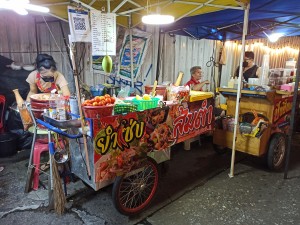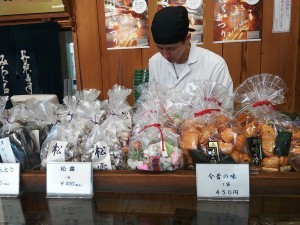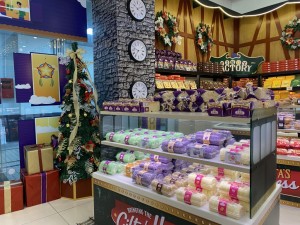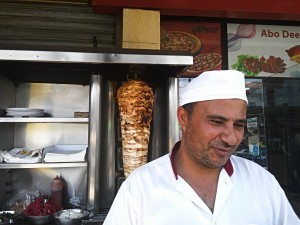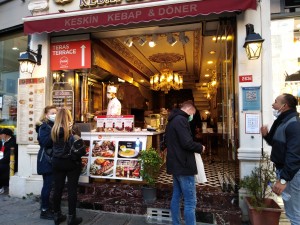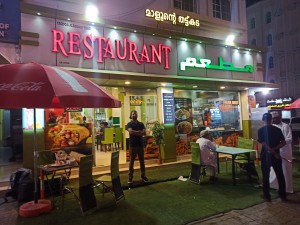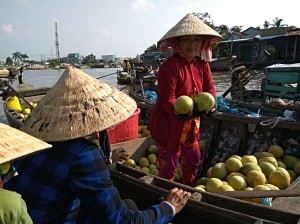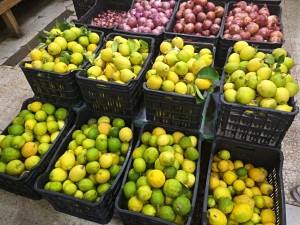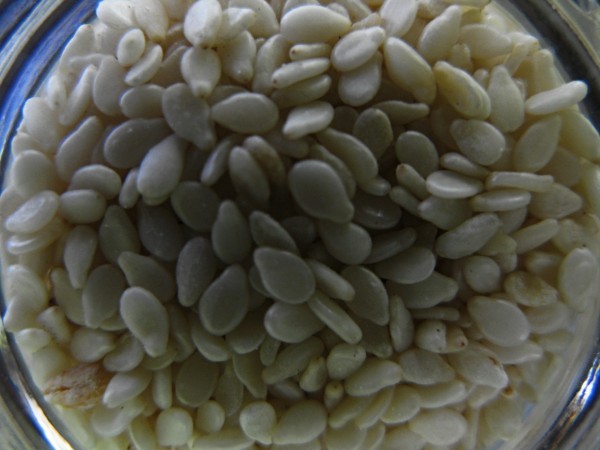
Goma Dofu: The Silky Sesame Tofu From Japan’s Ancient Temples
Goma dofu, or sesame tofu, is a delicately textured, savory dish that’s a beloved part of Japanese Buddhist temple cuisine (shojin ryori).
CONTINUE READING

Butterfly Pea Tea: The Magical Herbal Drink That Changes Color
One of the most enchanting drinks I tried in Thailand wasn’t from a fancy café—it was from a roadside vendor in Chiang Mai.
CONTINUE READING

Discover Kawagoe: Your Ultimate Guide to Tokyo’s Little Edo
Embark on a journey to Kawagoe and immerse yourself in the timeless beauty of Little Edo. Whether you're a history enthusiast, a foodie, or simply seeking a peaceful escape from Tokyo, Kawagoe offers a unique and enriching experience.
CONTINUE READING

Discovering gems and cultural sights of Yanaka during a nice stroll
Yanaka is a part of Taito. The name Yanaka appeared for the first time during the Edo period to describe the area that was situated between hills of Ueno and the valley of Hongodai, known also as Shitaya. The concentration of Buddhist temples in this area is a consequence of the urban architecture design from the Edo period. Starting from that moment, Yanaka became the area known as the “city of temples and colins”.
CONTINUE READING

Meiji Jingu Shrine in Tokyo
Meiji Jingu is dedicated to the divine soul of Emperor Meiji and his consort Empress Shoken (their tombs are in Kyoto). Emperor Meiji passed away in 1912 and Empress Shoken in 1914. After their demise, people wished to commemorate their virtues and to venerate them forever. Thanks to the sincere heart of the people, this shrine with the forest was established on November 1, 1920.
CONTINUE READING

Starbucks with a View: Rooftop Garden at GINZA SIX in Tokyo
Matsuzakaya Ginza store opened as the first department store in Ginza in December 1924, a year after the Great Kanto Earthquake, leading the recovery of Ginza. The approximately 43-meter-high building, which had eight floors above ground and the basement, was the tallest in Ginza at that time.
CONTINUE READING

Special Days in Edo - Decorated City and People
Tokyo finds its origin in a city originally called “Edo”. After Tokugawa Ieyasu moved to Edo in 1590, he excavated canals and reclaimed the inlets of Tokyo Bay to develop towns for people to live in. This was the beginning of Edo, which evolved into one of the largest metropolises in the world.
CONTINUE READING

Japanese Tea Types
Tea was introduced to Japan by the Buddhist priest Eisai at the end of the 12th century. Eisai gave tea seeds to the Buddhist monk Myoe and that seeds become the basis for Uji tea after being sowed in Toganoo, Kyoto. Uji in terms both f geography and climate, is suitable for tea growing. Therefore, Uji tea become famous for producing high-quality tea.
CONTINUE READING

Tokyo Higashi-Ginza Starbucks before a single act in Kabukiza Theatre Play
Kabuki is recognized internationally as one of Japan’s great performing arts with 400 years of history. Essentially a popular theatre has always reflected the tastes and fashions of the townspeople of that time. Buy a Sigle Act ticket and have an unforgettable experience.
CONTINUE READING

Visit National Historic Site – Meigetsu-in Temple in Kamakura
Visit National Historic Site – Meigetsu-in, the temple with Kannon Bodhisattva as the main image of worship. The temple that was founded in the year 1160 as “Meigetsu-an” (Bright Moon Hermitage) by Yamanouchi Tsunetoshi.
CONTINUE READING

Shinjuku Must-see Spots Route
See the best places in Shinjuku during 8 active hours. Don’t miss photo spots and enjoy a leisure walk through Shiki-no-michi Street that is a comfortable path full of greenery.
CONTINUE READING

The Head Temple of the Kenchoji School of Rinzai Zen in Kamakura
With more than 400 branch temples in Japan, Kenchoji Temple ranks first among the Five Great Zen Temples in Kamakura. The formal name is Kofukusan Kenchoji. Founded in 1253 by Hojo Tokiyori (1227-1263), the fifth regent of the Kamakura shogunate, it was the first Zen temple in Japan.
CONTINUE READING

1-Day, everything-in-1 tour of Tokyo’s top spots
A recommended tour to explore the city and suburbs. See the best of the city during a one day tour during which you will visit temples and museums. You will have some time to relax in parks and then do some shopping in vibrant streets of Asakusa.
CONTINUE READING

Explore Tokyo – City & Suburbs
From Anime pop culture hotspot to stylish spots for a night on the town, discover an endless array of places for all kinds of fun in Tokyo. Visit best places in the city center of Tokyo and its suburbs.
CONTINUE READING

A day trip from Tokyo to Little Edo in Kawagoe
Would you like to do time-travel and feel the Edo atmosphere? If so, you can do it easily in Japan. Are you curios where is it? Just read the post! Feel that unique atmosphere where local products melt with some modernity. Where people in kimonos stroll on the same lanes as people in jeans, T-shirts and sneakers.
CONTINUE READING

Eishoji Temple - the only nunnery in Kamakura
Visit the only nunnery in Kamakura in Eishoji Temple and admire many structures designated as a National Important Cultural Property. Tokozan Eishoji is a temple of the Jodo sect of Buddhism and the only nunnery in Kamakura today. The grounds were said to have been the residence of Ota Odkan (1432-1486), a reputed warrior of his era.
CONTINUE READING

Visit the main temple of the Engakuji Temple sect in Kamakura
Visit Engakuji Temple in Kamakura that is the main temple of the Engakuji sect, the school of Rinzai Zen Buddhism. Engakuji is a Buddhist temple founded in 1282 for Hojo Tokimune who was the regent of the Kamakura shogunate. Hojo Tokimune played a significant role in the Japanese history because he led the army against Mongol invasions.
CONTINUE READING

Meet Ten Kings of the Underworld in Ennoji Temple in Kamakura
The Buddhist concept of retribution means that doing good things leads to good results in the afterlife, and committing evil things leads to bad results. Ten kings of the Underworld judge whether people have been good or evil in their lives. If you want to meet all ten of them, visit the Enno-ji temple in Kamakura.
CONTINUE READING

Bangkok to Ayutthaya by Train: Timetable, Best Train Options, and How to Get There
Interested in visiting Ayutthaya one of top tourist attractions in Thailand? The magic city with a lot of temples, ruins and with a lot of charm. The city, that is a former Thai capital, is on the UNESCO list and can be done in one day if you are staying in Bangkok.
CONTINUE READING

Bangkok Don Mueang Airport Bus transport
If you are like many other tourists staying close to Khao San Road, the A4 bus should be the transport to be considered. It is not only a very affordable way to travel between Khao San Road and Don Mueang Airport (DMK) but it is also very convenient and due to the fact that it is air-conditioned, it is also a comfortable trip.
CONTINUE READING
